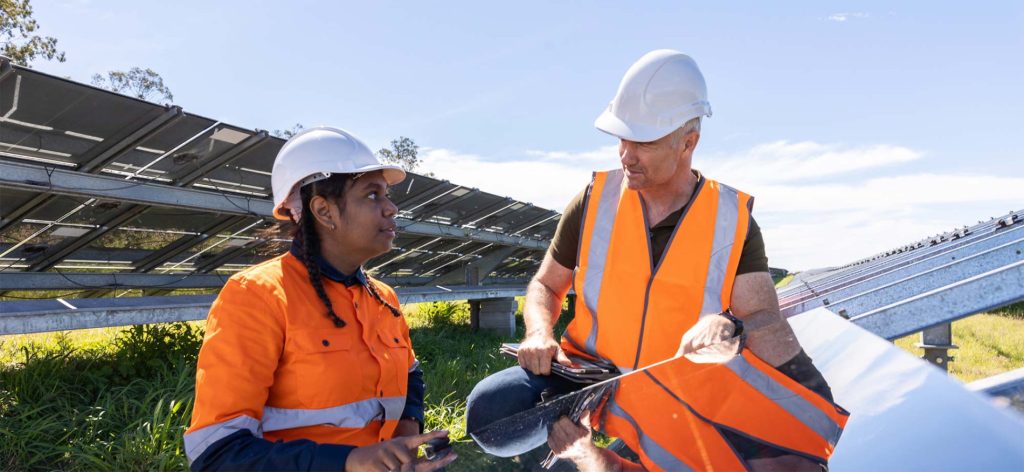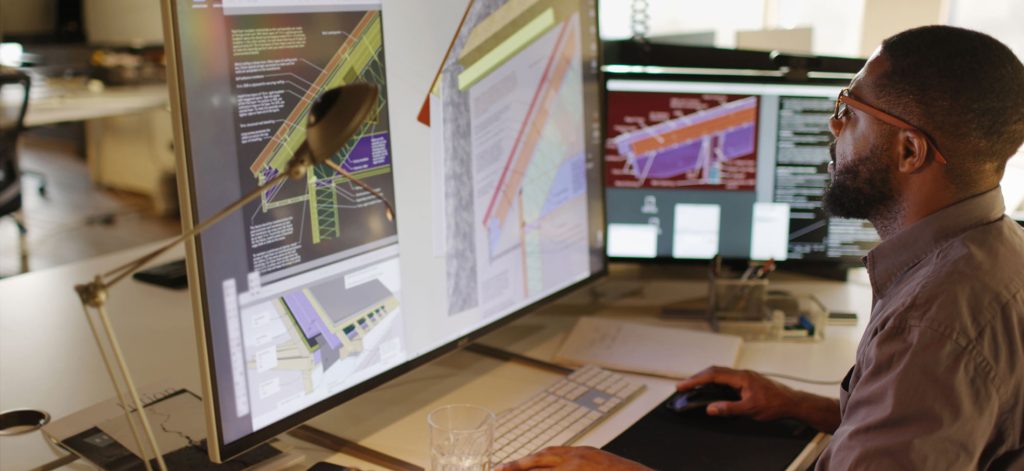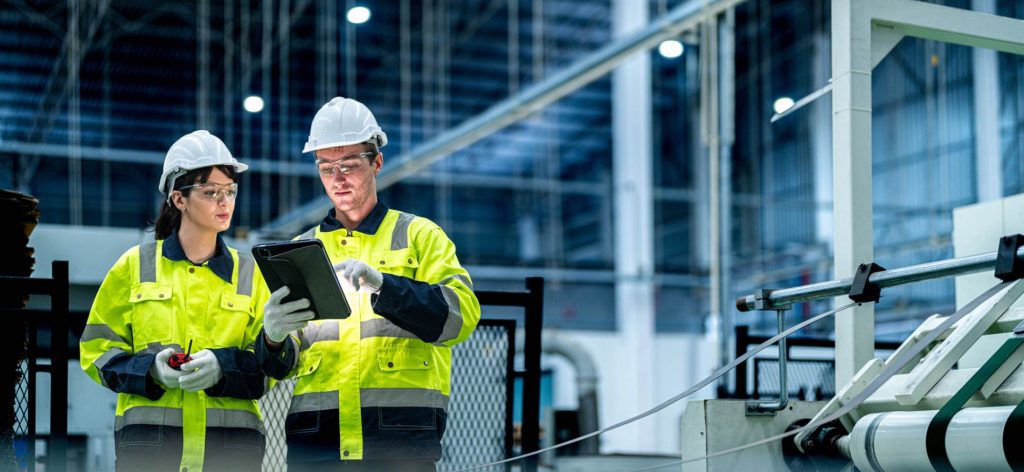Australian Infrastructure: 4 Ways Businesses Can Foster Innovation in the Industry
In its 2023 year in review, the Australian Construction Association (ACA) suggested that improving productivity is paramount to overcoming challenges in the sector, particularly finding ways to encourage and invest in innovative solutions. Fortunately, Research from Bond University shows that fostering a culture of creativity within teams, even though something as simple as humour, can…
In its 2023 year in review, the Australian Construction Association (ACA) suggested that improving productivity is paramount to overcoming challenges in the sector, particularly finding ways to encourage and invest in innovative solutions.
Fortunately, Research from Bond University shows that fostering a culture of creativity within teams, even though something as simple as humour, can break down barriers in traditionally rigid environments.
With ongoing challenges like workforce shortages, rising costs, and sustainability demands, the infrastructure sector needs to prioritise innovation. Through partnering with infrastructure businesses over the last decade, we’ve seen time and time again that innovation starts with its people.
Let’s explore how the industry can encourage this shift.
How to Foster Innovation in the Infrastructure Industry
1. Encourage a Culture of Openness and Psychological Safety
One of the most significant barriers to innovation in any industry is a rigid, hierarchical structure where employees fear sharing new ideas. This is particularly true in the infrastructure industry where employees are often afraid to speak up and challenge industry norms.
Research by Dr. Ahmad Siddiquei from Bond University shows that when employees feel safe to speak up, they’re more likely to share creative ideas and challenge outdated norms. The researchers found that leaders can foster this environment by encouraging open communication, reducing tension through strategic use of humour, and demonstrating that they value diverse perspectives and new ways of thinking.
Here are a couple of ideas you could try to create an environment that encourages employees to share creative ideas:
- Regular Team Huddles or Open Forums: Project managers could hold weekly team meetings where all team members, from junior engineers to site workers, are encouraged to share ideas, voice concerns, and ask questions about ongoing projects. Leaders can set up anonymous suggestion boxes or digital platforms to ensure everyone, regardless of their position, feels comfortable contributing. This promotes transparency, empowers workers, and allows for early identification of issues and innovative solutions.
- Light-hearted Icebreakers During Meetings Before diving into a meeting about a new project, the manager can kick off with a light-hearted story or joke related to the work to help break the ice. Diffusing tension and making the team feel more relaxed, helps to create an environment where everyone feels safe expressing ideas.
2. Integrate Sustainability as a Core Driver for Innovation
Sustainability is a strong catalyst for innovation in the infrastructure sector. The Walkerston Bypass project demonstrated that sustainability-focused solutions – such as reducing embodied emissions by 53 percent through innovative energy modelling – can drive creativity in design and execution.
The need for sustainability is also recognised by the Australian Government as it encourages companies to rethink traditional practices and adopt more environmentally friendly approaches through its net-zero emissions initiative.
At Fuse Recruitment, we’ve noticed that companies that prioritise eco-friendly methods are not only contributing to the future of our planet but are also attracting candidates that share the same outlook for the future. This is an especially important factor to consider after employment data from the Australian Bureau of Statistics (ABS) revealed a 1.9 per cent decline in the average number of construction workers in 2023.
3. Hire for Diversity and Build an Inclusive Workforce
With just 12 percent of the workforce being female, the infrastructure industry has an enormous opportunity to benefit from the untapped talent pool of women and underrepresented groups. Given this, the sector is missing out on valuable perspectives that could drive creative solutions.
By bringing together individuals with different backgrounds and experiences, companies can foster an environment where fresh ideas flourish, and innovation becomes a natural part of everyday operations.
Here are two examples of how companies can prioritise diversity when hiring:
- Use Inclusive Job Descriptions and Flexible Hiring Practices: Craft job descriptions that emphasise transferable skills and avoid unnecessarily strict requirements, such as years of experience, that may deter candidates. Implement flexible work arrangements to accommodate different needs, like childcare or caregiving responsibilities, making roles more accessible to a wider talent pool.
- Partner with Vocational Programs, Universities or Specialist Recruitment Agencies: Partner with vocational schools, universities, and specialist recruitment agencies that focus on promoting STEM careers to women, Indigenous communities, and other underrepresented groups. Offering internships, mentorship programs, and apprenticeships specifically targeted at these groups can open pathways into the industry. These organisations often have frameworks in place to support small and mid-sized firms in running programs that typically only large firms could accommodate.
4. Leverage Technology to Unlock New Possibilities
Technology is transforming the infrastructure industry, enabling companies to explore new ways of working that increase efficiency and improve project outcomes. From AI-driven project management to digital twins and smart materials, innovation through technology has the potential to reshape how infrastructure is designed, built, and maintained.
Understandably, it can be hard to know where to start introducing new technology as implementing change can be a challenge in itself. According to the McKinsey Globe Institute, construction is the second least digitised sector in the world. Below are some strategies leaders in infrastructure can implement to encourage the use of new technologies in their teams:
- Highlight the Benefits for Your Team’s Roles: Demonstrate how new technology can make employees’ jobs easier, such as reducing repetitive tasks like data entry or improving safety on-site through predictive analytics. When employees see how technology can enhance their productivity and reduce their workload, they are more likely to adopt and support its integration.
- Provide Hands-On Training and Resources: Organise interactive training sessions where teams can experiment with tech in real-world scenarios, showing them how it works in their daily tasks. Offer resources like tutorials or ongoing support for further learning. Practical, hands-on experience helps employees gain confidence with new technology, making them feel more competent and less intimidated by new tools.
- Involve the Team in Decision-Making: Invite team members to provide input on which technology or new platforms to implement and how to best integrate them into their processes. Hold regular feedback sessions to adjust the newly introduced tech based on their experiences and insights. When employees feel they have a voice in what is implemented, they are more likely to take ownership of the transition and work collaboratively to make it successful.
As the infrastructure industry continues to evolve, innovation will be the key to overcoming its most significant challenges.
Fuse Recruitment understands that the path to innovation begins with people – those who are willing to think differently, challenge the status quo, and bring new ideas to the table. Our team of infrastructure specialist consultants have vast networks in the industry and are more than happy to connect you with the right people to take your business forward.
Contact us today or click here to learn more about our infrastructure recruitment services.







